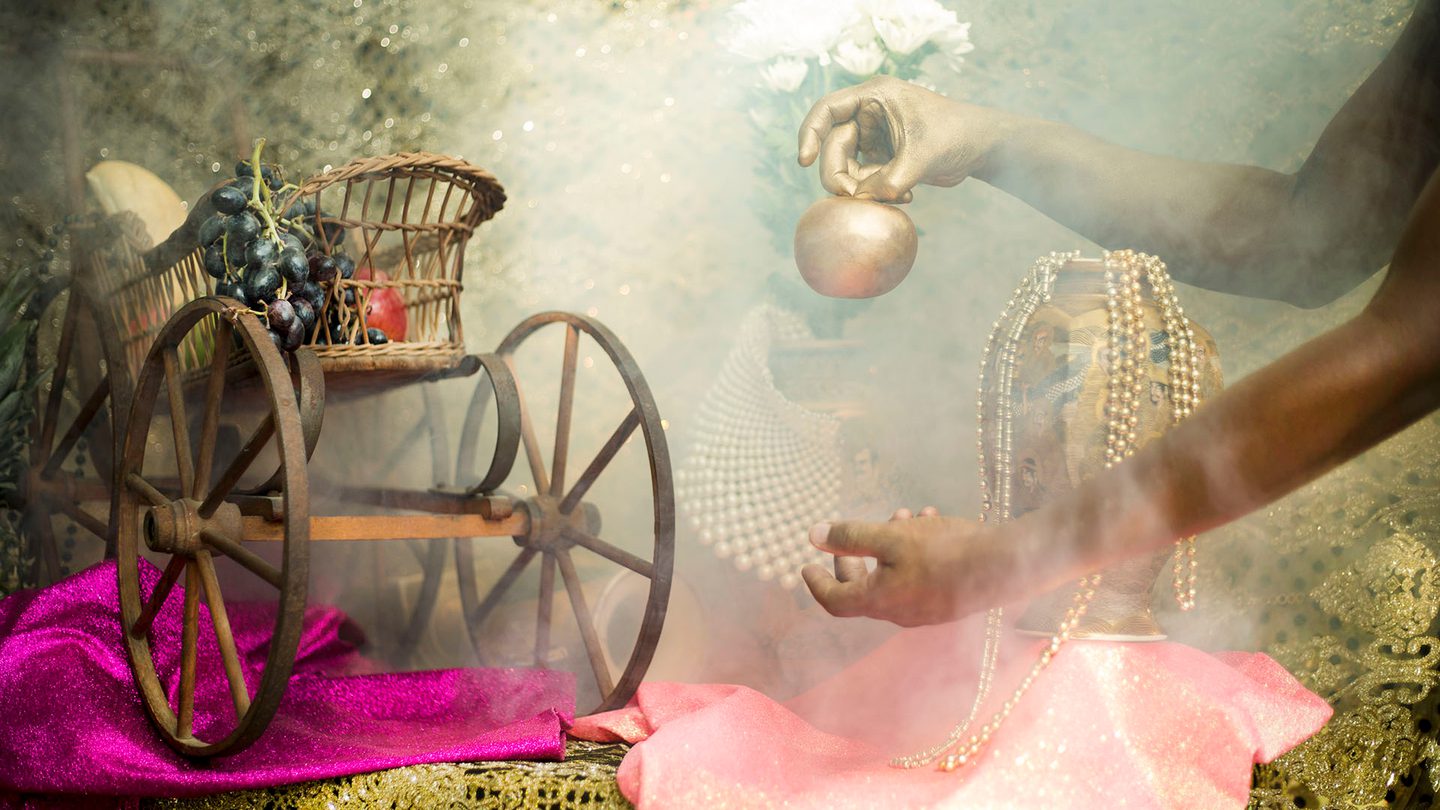
A new exhibition at the nonprofit Baxter St at the Camera Club of New York provides a fresh look at works by people of color and Queer-identifying lens-based artists, including that of a Columbus College of Art & Design alum, Derick Whitson (Photography, 2014). The group show, Por Los Ojos De Mi Gente (Through the Eyes of My Tribe) opened June 19 and is on view through July 24, 2020.

On the occasion of this curated exhibition inspired by the work and legacies of pioneering transgender activists Marsha P. Johnson and Sylvia Rivera, Whitson sat down and answered questions via email about his time here at CCAD, his artistic process, and what’s to come next.
You can find that conversation below, and you can find more of Whitson’s work on his website, derickwhitson.com, and on Instagram and Facebook.
What brought you to CCAD?
My love for creating art originally brought me to CCAD in 2010. In the beginning of my career, I saw art as a therapeutic mechanism that allowed me to fully express myself. Art is now more of a way to fully engage and clearly communicate with the world. CCAD was the beginning, the stepping stone that encouraged me to find my individual voice.
What techniques did you learn in the classroom and studio while at CCAD that you still use in your practice?
I learned a large variety of techniques at CCAD. I was trained on how to use the camera effectively by my Photo 1 professor Shannon Benine. I learned more about staging lighting sources and utilizing natural light through Duncan Snyder. I still utilize methods of color theory that I learned during my freshman year. I now combine my technical skill with my concepts.
What is your process for capturing an image, from the original concept to the final work?
I start by creating a backdrop. It could be in a natural setting outdoors, indoors, or fabric pinned to a wall. I then put together a costume; this moves to hair and makeup. The photographs produced always follow the light. I’m very sensitive to how the lighting will set the mood for the set created. I then typically work with an individual who will assist in me taking the image of the character I have created for myself.
You serve as your own model for many of your photographs. How has being both model and photographer changed the way you take photos?
Being the model and photographer has allowed me to have a lot of control over the images I want to put out into the world. As a model, I am allowing myself to be fully committed and emotionally engaged with the world, and as the photographer, I can still objectively engage with the effectiveness of the overall image.
In a 2019 interview with The Advocate, you mentioned that your photos were in response to your location in Galveston, TX. Can you go into detail on how being in Galveston influenced your work?

I attended the Galveston Artist Residency from 2018 to 2019. I had the opportunity to showcase my work in The Advocate magazine while at the residency. I worked closely with the historical foundation and had photographed on properties located in Galveston, Texas. I wanted to engage with the history of slavery and natural disasters that had taken place there before my arrival. In the beginning, I felt like a stranger and an outsider to the history of the South. I also felt welcomed, because I had an opportunity to share not only my story, but engage with the histories that had become before me. I left Galveston, Texas with a clearer picture of where my current body of work, Sugar (Chapter II), is headed.
You have work in a show, Por Los Ojos De Mi Gente (Through the Eyes of My Tribe), alongside other POC- and Queer-identifying lens-based artists. What do you want a viewer to experience and feel when they walk by your work on view in the window?
I am honored to be a part of the exhibition Por Los Ojos De Mi Gente (Through the Eyes of my Tribe) at Baxter St. Camera Club of New York. There is an openness and pathway that allows the viewer to connect with the characters I’m creating. This exposes truths and lies in the photographs.
There's a lot going on in the U.S. right now--a pandemic, action and conversations around structural racism and inequality, and of course, June was Pride month, too--how do you keep yourself mentally and physically healthy while contributing your voice and your talents during this time?
I have been focusing on my individual power. I haven’t put much energy into what has been projected onto me but rather, I pay attention to my emotions, body, and spirit. All of this includes working towards new work, Pilates, and pursuing the ways I can exude Black excellence.
Do you have any advice you'd like to share with CCAD's emerging artists and designers?
My advice for emerging artists is to figure out what makes you happy and never stop searching for the truth.
What does the rest of 2020 hold for you?
I plan on attending the AIM Fellowship at the Bronx Museum of the Arts, along with The Monson Arts’ residency in the future.
Learn more about Photography at CCAD or apply here.
